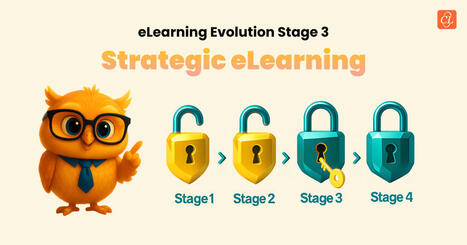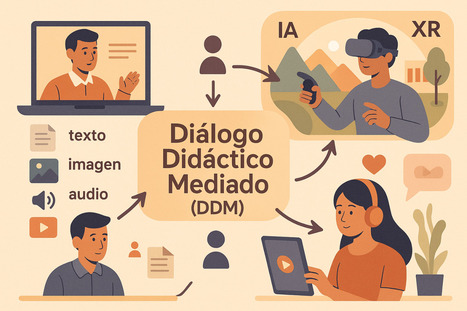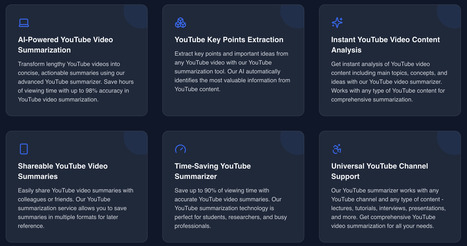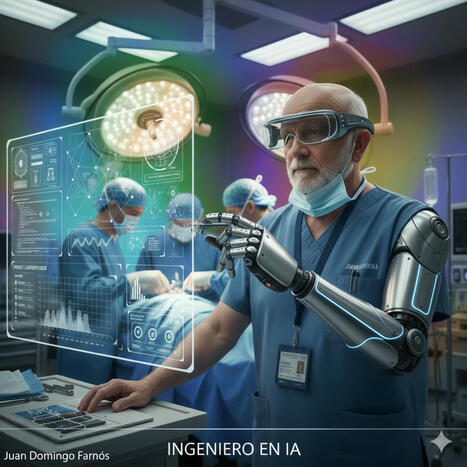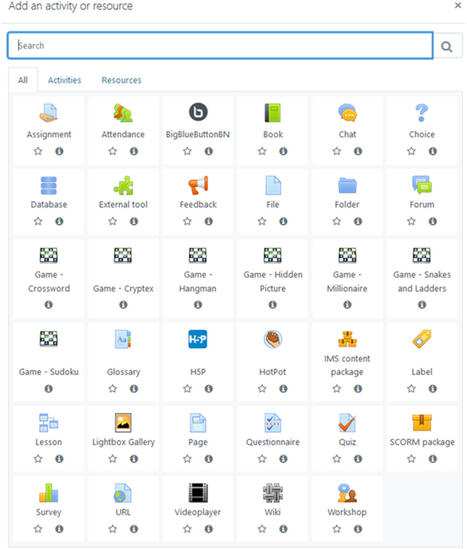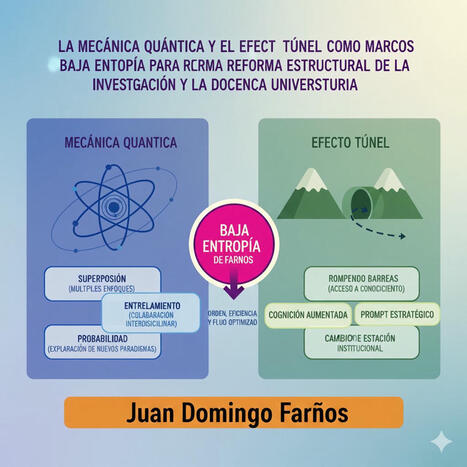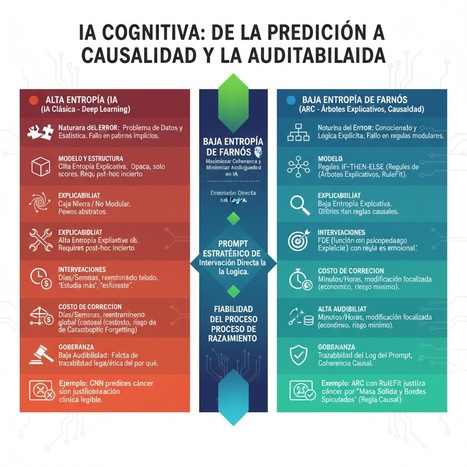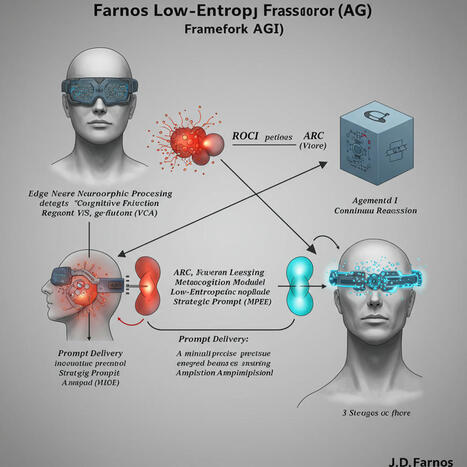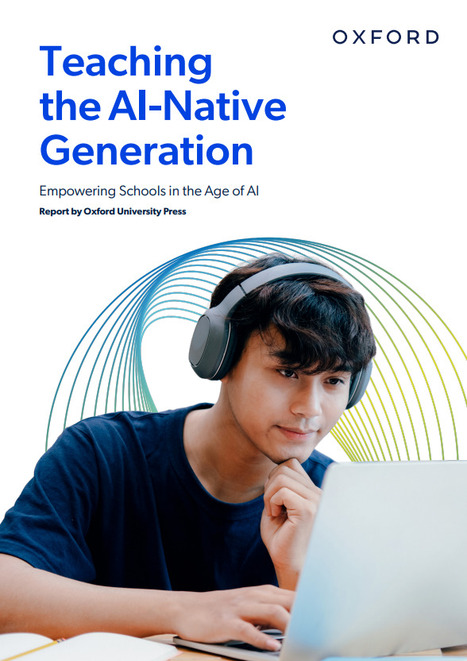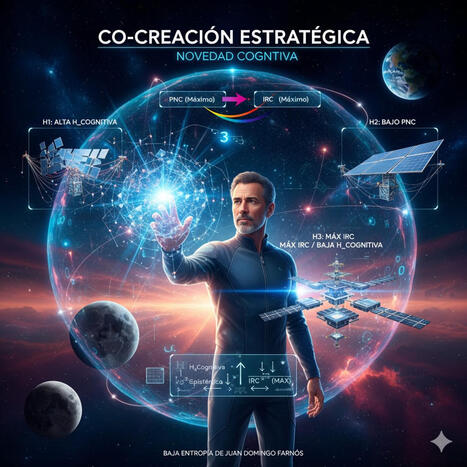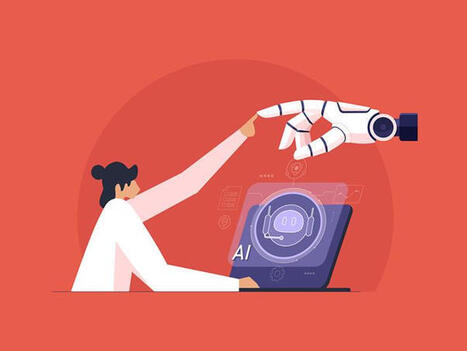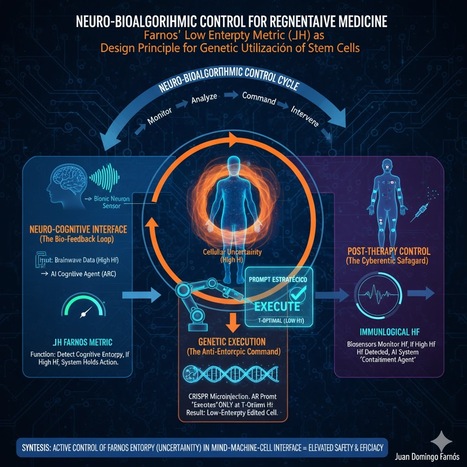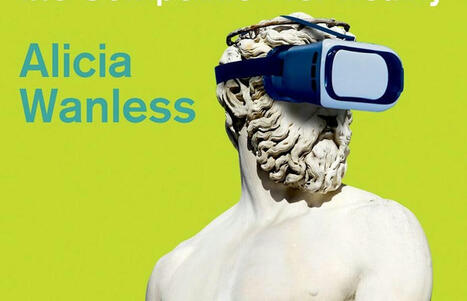 Your new post is loading...
 Your new post is loading...

|
Rescooped by
juandoming
from eLearning
Today, 2:06 AM
|
Explore Stage 3 of eLearning Evolution, where Strategic eLearning aligns learning with business goals through design, technology, and measurable impact.
Via CommLab India

|
Rescooped by
juandoming
from Education 2.0 & 3.0
October 20, 8:00 AM
|

|
Rescooped by
juandoming
from Education 2.0 & 3.0
October 18, 3:15 AM
|
This article explores how AI, analytics, and the Six Boxes® Performance Thinking model are transforming learning measurement.
Via Yashy Tohsaku

|
Rescooped by
juandoming
from Inovação Educacional
October 17, 2:22 AM
|
A new collection of essays, AI and the Future of Universities (HEPI Report 193) edited by Dr Giles Carden and Josh Freeman, brings together leading voices from universities, industry and policy. The collection comes at a point when Artificial Intelligence (AI) is projected to have a profound and transformative impact on virtually every sector of society and the economy, driving changes that are both beneficial and challenging. The various pieces look at how AI is reshaping higher education – from strategy, teaching and assessment to research and professional services.
Via Inovação Educacional

|
Rescooped by
juandoming
from Learning & Technology News
October 16, 8:49 AM
|

|
Rescooped by
juandoming
from Educación a Distancia y TIC
October 15, 10:21 AM
|
AUDIO – VÍDEO Todas las entradas de la serie “80 años. Compendio EaD”, VER AQUÍ Reiteramos de nuevo que en el corazón de la educación a distancia (EaD) se sitúa el Diálogo Didáctico Mediado (DDM) (García Aretio, 2001; 2025), entendido como el entramado de interacciones intencionales entre docentes, estudiantes y contenidos a través de diversos mediadores. […]
Via LGA

|
Rescooped by
juandoming
from Edumorfosis.it
October 15, 10:17 AM
|
Teachers are tough to crack. Thomas Edison believed film would replace teachers1, BF Skinner believed they would be replaced by ‘teaching machines’ and Sal Khan (of Khan Academy) argued in ~2015 that information transfer would soon primarily happen through video.2 Perhaps the reason these predictions were wrong is that we still don’t fully understand what great teaching is. It’s instruction and mentorship and coaching and pastoral support combined in a complex combination. There is a reason why Jean-Jacques Rousseau believed he would only be able to teach one other person in his lifetime, and at a stretch. Now some think AI puts teaching jobs at risk but I don’t think this is right for three reasons.
Via Edumorfosis

|
Rescooped by
juandoming
from Digital Delights for Learners
October 14, 9:19 AM
|
Save hours with SolidPoint's AI summarizer for YouTube videos, Reddit posts, arXiv papers, websites, and PDFs. Get key insights instantly with our powerful summarization tools.
Via Ana Cristina Pratas

|
Scooped by
juandoming
October 13, 2:29 AM
|
Juan Domingo Farnos La construcción del brazo robótico quirúrgico se enmarca en la Ingeniería de la Baja Entropía de Farnos (BEF), una metodología que impone la minimización activa de la incertidumbre como el objetivo fundamental del diseño. Esta aproximación no es especulativa, sino una convergencia forzada de las fronteras de la IA, la Mecánica Cuántica y…

|
Rescooped by
juandoming
from e-learning-ukr
October 12, 8:49 AM
|
Contemporary education is often based on using e-learning courses, which have become a popular means of delivering didactic material to students. Among the main advantages mentioned is the potential possibility of creating individual ways of learning and teaching. The purpose of this article is to provide a description of the various approaches to adaptive learning, to present the comparative research results of a Polish-Ukrainian study, as well as to highlight the options offered by LMS Moodle (Modular object-oriented dynamic learning environment Learning Management System) for the implementation of adaptive learning and the possibility of taking into account the expectation of students regardless of the country. During the study, an online survey was administered to 59 students at the University of Silesia in Katowice (US), Poland and 121 students at the Borys Grinchenko Kyiv University (BGKU), Ukraine between March–June 2020. All of the students were studying online due to the pandemic caused by COVID-19. The classes were conducted in synchronous and in asynchronous modes using e-learning courses in the Moodle system, as well as MS Teams for Polish students and Google Suite for Ukrainian students. At the same time, the majority of the surveyed students declared that they lack personalization, both in terms of materials and the learning process, which was limited in terms of fulfilment and they would like to have a choice of the level of study.
Via Vladimir Kukharenko

|
Scooped by
juandoming
October 11, 3:05 AM
|
Juan Domingo Farnos La Investigación Impulsada por Inteligencia Artificial para Sistemas (ADRS) puede lograr el redescubrimiento y la superación de algoritmos diseñados por humanos en áreas como la programación de la nube, el balanceo de carga de MoE (Mixture of Experts), la optimización LLM-SQL, y la programación de transacciones mediante la automatización del ciclo de…

|
Scooped by
juandoming
October 9, 2:20 AM
|
Juan Domingo Farnos Estamos proporcionando una introducción y un ejemplo aplicado sobre la intersección de la Física Cuántica y la Inteligencia Artificial (IA), específicamente en el ámbito de la Optimización Cuántica para el Entrenamiento de Redes Neuronales. Enmarcar la Educación Disruptiva & IA dentro de la investigación y docencia universitaria, es muy relevante, ya que resalta la necesidad de integrar estos temas de vanguardia…

|
Rescooped by
juandoming
from e-learning-ukr
October 9, 2:04 AM
|
Everything CEOs in L&D need to know about driving AI adoption. Learn, adapt, and overcome challenges in the newly shaped environment.
Via Vladimir Kukharenko
|

|
Scooped by
juandoming
October 21, 2:05 AM
|
Juan Domingo Farnós El paradigma de la Baja Entropía de Farnos se instituye como una métrica de diseño imperativa para el Agente de Razonamiento Continuo (ARC). Su objetivo es transicionar la IA de la mera predicción probabilística a la justificación causal y la máxima coherencia lógica, confrontando la Alta Entropía Operativa de los modelos opacos.…

|
Scooped by
juandoming
October 19, 3:25 AM
|
Juan Domingo Farnos __________________________________________________________________________________________________________ RESUMEN La Baja Entropía de Farnos es una métrica de diseño de software utilizada por el Agente de Razonamiento Continuo (ARC). Su objetivo central es la minimización de la fricción cognitiva del usuario en cualquier tarea compleja. En la universidad, el ARC emplea la Neurogénesis Metodológica para autocalibrar sus estrategias de…

|
Scooped by
juandoming
October 16, 11:09 AM
|
Juan Domingo Farnos La transición de los chatbots predictivos al razonamiento autónomo de la AGI representa un cambio de paradigma en la inteligencia artificial, un campo en el que Juan Domingo Farnós ha sido un autor pionero. Como señala Yann LeCun (2022), «el próximo paso en la IA no es solo un avance en la capacidad de predicción, sino la creación de…

|
Rescooped by
juandoming
from Education 2.0 & 3.0
October 16, 2:04 AM
|
These educator-tested platforms can help you create instructional materials and develop ideas for lessons—and they require little to no tech savvy.
Via Yashy Tohsaku

|
Rescooped by
juandoming
from e-learning-ukr
October 15, 10:19 AM
|
Used transparently and ethically, GenAI can level the playing field and lower the cognitive load of repetitive tasks for admin staff, student support and teachers
Via Vladimir Kukharenko

|
Scooped by
juandoming
October 14, 9:22 AM
|
By Juan Domingo Farnós La integración de la neurona artificial bio-basada en proteínas bacterianas con su marco de Baja Entropía de Farnos (↓H) y Educación Disruptiva conforma una propuesta de ciencia-ficción plausible de gran originalidad, lista para su presentación académica. Prólogo: Control Neurobioalgorítmico para Medicina Regenerativa En la vanguardia de la medicina regenerativa, la transición…

|
Rescooped by
juandoming
from Educational Technology News
October 14, 2:14 AM
|
Across departments, Middlebury professors are grappling with the implications of artificial intelligence (AI) in higher education. Many professors, including Professor of English Megan Mayhew-Bergman and Lecturer in Chinese Mairead Harris, have modified syllabi to permit AI in specific contexts.
Via EDTECH@UTRGV

|
Scooped by
juandoming
October 12, 9:40 AM
|
Juan Domingo Farnos La construcción física se rige por la Baja Entropía de Farnos (BEF), empleando IA-AGI y Metalearning para diseñar hardware con 7 DoF de Nitinol y Grafeno. La Mecánica Cuántica valida el software predictivo, asegurando que cada componente minimice la incertidumbre y maximice el determinismo antes de la fabricación. Esto garantiza que el brazo…

|
Scooped by
juandoming
October 10, 3:02 AM
|
juandon El concepto de Evaluación Adaptativa Cuántica representa la convergencia entre la Mecánica Cuántica aplicada (específicamente la IA Cuántica) y los principios de la Baja Entropía de Farnos en el diseño de software pedagógico. Marco Conceptual para la Evaluación Adaptativa Cuántica (EAC) La Evaluación Adaptativa Cuántica (EAC), concebida bajo la métrica de Baja Entropía de…
Thoughts on Alicia Wanless's book The Information Animal
Via Gilbert C FAURE
|



 Your new post is loading...
Your new post is loading...
 Your new post is loading...
Your new post is loading...




